#sir norman foster
Photo

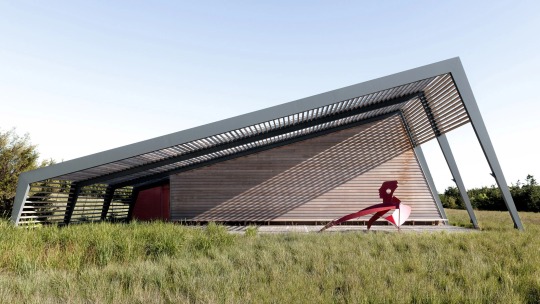


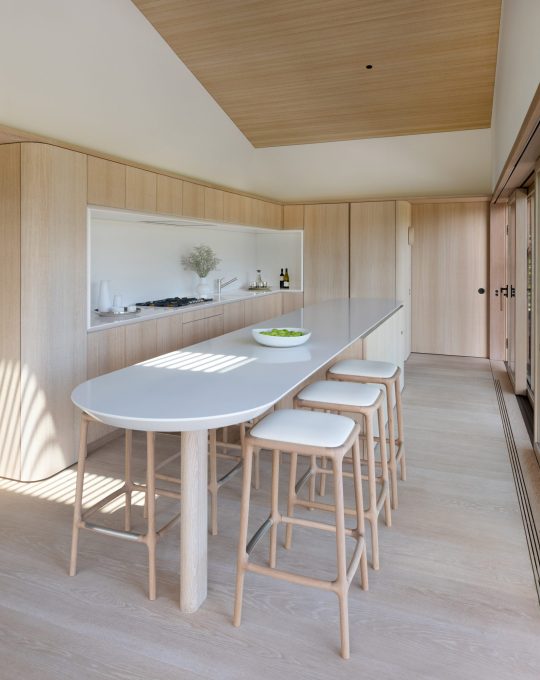
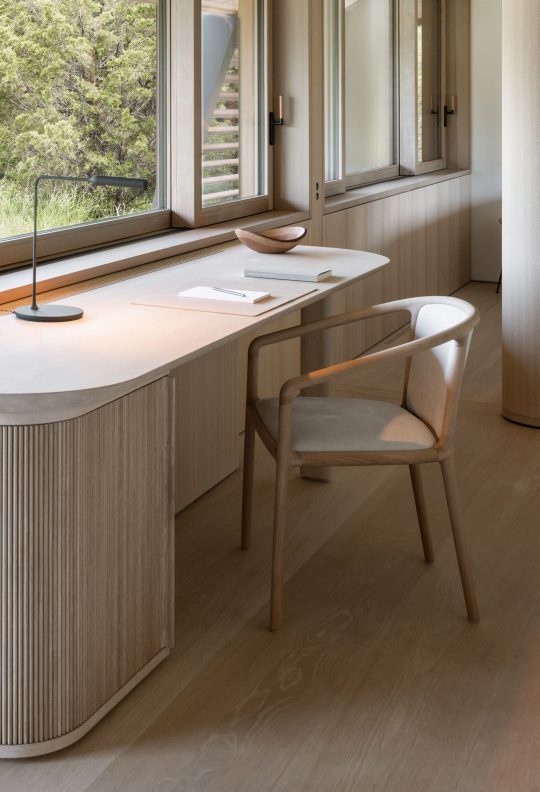
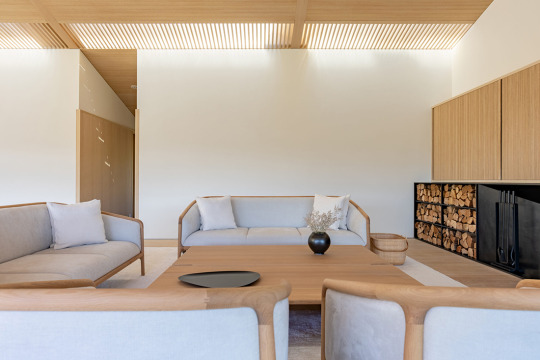

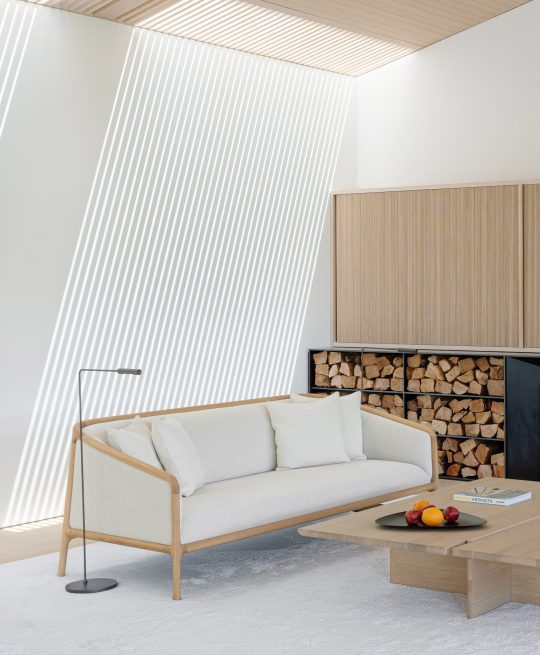

The Foster Retreat, Chilmark, Martha’s Vineyard, Massachusetts , USA,
The Foster Retreat is a private initiative by the Foster Family Dynasty Trust who will, from time to time, invite friends who are writers, researchers, architects, engineers and those concerned with issues of cities and the environment to share the retreat.
Furniture designed by Cremoco Architects
#art#design#Architecture#interiors#sir norman foster#norman foster#retreat#martha's vineyard#massachusetts#tisbury great pond#blue heron farm#cremoco architects#luxurylifestyle#luxuryhomes#luxuryhouses
120 notes
·
View notes
Text

Norman Foster + Partners
The SEC Armadillo / Clyde Auditorium in Glasgow, 1997.
Photo: Dwell
24 notes
·
View notes
Photo
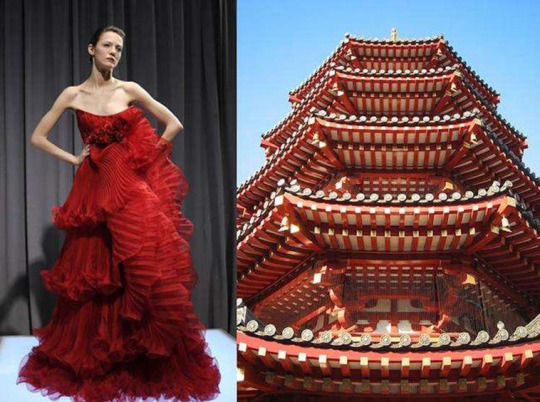
Marchesa Fall/Winter 2008 | Kawasaki Daishi. (Image via Marchesa and wine-montrachet)
Images Reveal How Much High Fashion Is Inspired By Architecture

Gareth Pugh Spring 2009 | Sir Norman Foster, Hearst Building, NY. (Image via Only Dope Fashion)
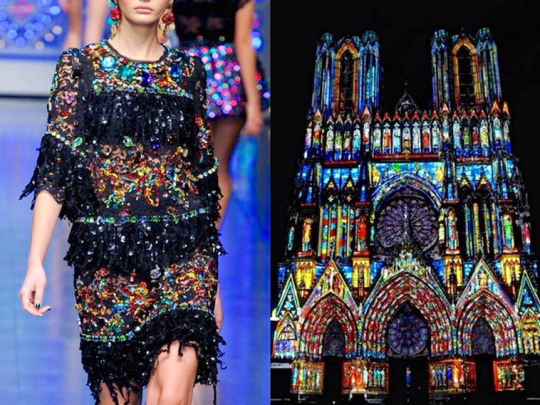
Dolce & Gabbana S/S 2012 | Cathedral Notre-Dame de Reims, France. (Image via Where I See Fashion)
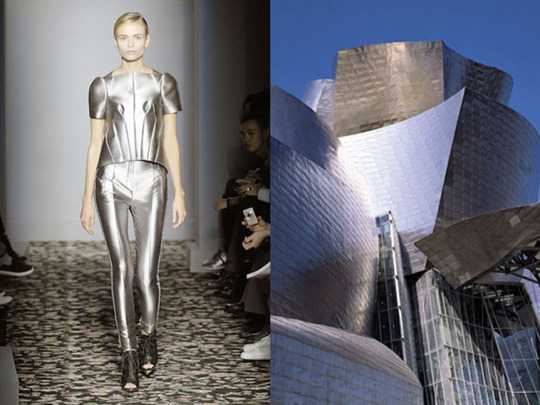
Balenciaga Spring 2008 | Guggenheim Museum, Bilbao, Spain. (Image via Scarfe Unravels)
#images#high fashion#architecture#marchesa#kawasaki daishi#gareth pugh#fashion designer#sir norman foster#hearst building#only dope fashion#photographer#dolce & gabbana#cathedral notre-dame de reims#france#where i see fashion#balenciaga#guggenheim museum#bilbao#spain#scarfe unravels
2 notes
·
View notes
Video
Way Out by johnshlau
Via Flickr:
The Futuristic Look some 20 years ago… Designed by Sir Norman Foster and opened in 1999, Canary Wharf is a London Underground station at Canary Wharf and is on the Jubilee line, between Canada Water and North Greenwich stations. Over 40 million people pass through the station each year, making it second busiest on the London Underground outside Central London after Stratford, and also the busiest that serves only a single line. Interestingly some scenes for 2016’s "Rogue One: A Star Wars Story" were filmed at this underground station during the hours when the line was closed to the public, from mid-night to 4am. Taken obviously during the non rush hours:-) Explore #11 (2023-10-06) - Thank you for stopping by and for your words of encouragement and favorites!
#Way Out#futuristic look#Canary Wharf Underground Station#Canary Wharf#Underground Station#Tube Station#Sir Norman Foster#Star Wars#Rogue One#non rush hours#tube#station#underground#escalators#futuristic#architecture#glass#London#UK#England#Explore#flickr
1 note
·
View note
Video
Sir Norman Fosters Masterpiece - FU Library by Thomas
Via Flickr:
Another piece out of the Photoset I was allowed to create / collect at the FU Berlin Philosophic Libary - architecture made by Sir Norman Foster Another picture here: www.flickr.com/photos/tom26ger/1000334051/
#tom26ger#tom29ger#rebelxt#canonrebelxt#canon350d#canon#berlin#350d#bw#lights#monochrome#monochrom#schwarzweiss#black and white#norman Foster#Sir Norman Foster#Foster#FU Berlin#Freie Uni Berlin#Freie Universitaet Berlin#Bibliothek Berlin#modeern architecture#architektur#architecture#The Perfect Photographer#library#sigma1020mm#flickr
0 notes
Text

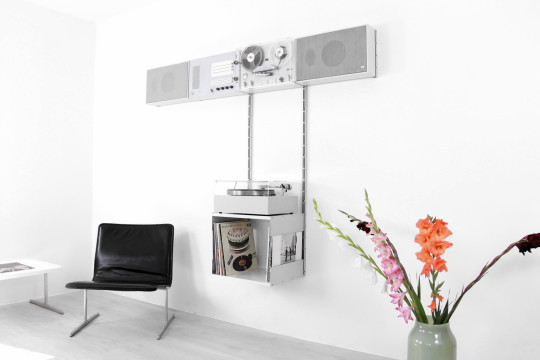

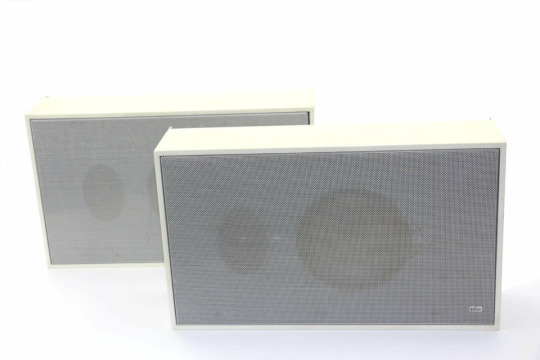


Dieter Rams for Braun, 1962/1963. Wall Mounted Audio 2/3 (components: control TS45, reel-to-reel tape recorder TG60, slim speakers L450, record player PCS5), (Image 1 credit: Matthew Donaldson)
Dieter Rams design ethos was very clearly codified by himself in ten legendary principles for good design:
1. Good design is innovative;
2. Good design makes a product useful;
3. Good design is aesthetic;
4. Good design makes a product understandable;
5. Good design is unobtrusive;
6. Good design is honest;
7. Good design is long-lasting;
8. Good design is thorough down to the last detail;
9. Good design is environmentally friendly;
10. Good design is as little design as possible
Dieter Rams, Nicolas Ghesquière, Sir Terence Conran, Lord Norman Foster, Jasper Morrison and Sir Paul Smith are among the design stars to give their support to the protection of design patent rights.
more info:
— https://braunaudio.de/en/braun-hifi-wall-unit-wandanlage-stereo-system-60ties/
— https://designwanted.com/design-icons-dieter-rams/
#dieterrams#design#braun#object#intemporal#contemporary#bauhaus#sound#equipment#music#product#productdesign#60s#70s#nicolas ghesquière#Sir Terence Conran#Lord Norman Foster#jasper morrison#paul smith#wallpaper magazine#patent#industrial design
29 notes
·
View notes
Photo

Hongkong & Shanghai Banking Corporation Headquarters. Designed by Sir Norman Foster 1979 - 1983, completed in 1986.
106 notes
·
View notes
Text

Designed by the London studio of British superstar architect Sir Norman Foster, this 120-meter-high skyscraper being constructed on the banks of the Danube is being called by some a symbol of modernity; by others a warning that big money, with the backing of Orban’s government, is set to radically transform the Hungarian capital, risking its status as a UNESCO World Heritage Site.
2 notes
·
View notes
Text

Architectural Reflections: City Hall, Whitehall, and the Evolution of Political Power in the UK
The move from City Hall to the Crystal marks a significant shift in the architectural and political landscape of London, offering a unique lens through which to examine the interplay of power, authority, and the role of architecture in shaping political narratives. This relocation symbolizes more than just a change of address; it reflects broader questions about the representation of political power and its accessibility to the public.
City Hall: The Democratic Ideal
City Hall, designed by Sir Norman Foster and opened in 2002, has been a symbol of transparent governance and democratic engagement. Its unique spherical design, prominent location by the Thames, and open spaces like the Assembly chamber and ‘London’s Living Room’ exemplify a commitment to accessibility and public involvement. The building’s energy-efficient design also underscores a modern, forward-thinking approach to governance.
The decision to move to the Crystal, another exemplar of sustainable design, is driven by financial pragmatism and the promise of long-term savings. However, it also raises concerns about diminishing the symbolic status of the GLA and its accessibility. The Crystal, located in Newham, offers a different kind of visibility—one that aims to spur regeneration in a deprived area. This shift can be seen as a rebalancing of focus, from the iconic central skyline to the broader, more diverse needs of London’s suburbs.
Whitehall Palace: The Monarchical Ideal
In contrast, the historical context of Whitehall Palace offers a different perspective on the relationship between architecture and political power. Once the main residence of English monarchs, Whitehall Palace was an expansive and grandiose complex, epitomizing royal authority and the centralized power of the monarchy. Its destruction by fire in 1698, leaving only Inigo Jones's Banqueting House, symbolizes the transience of even the most imposing symbols of power.
Whitehall’s architectural splendor was both a reflection and an instrument of monarchical authority. The Banqueting House, with its classical Palladian style, was intended to project the timelessness and legitimacy of the monarchy. However, the financial and symbolic excesses of such a grand project were ultimately unsustainable and disconnected from the public, mirroring the fate of King Charles I, who was executed outside this very building.
Architectural Reflections on Power and Authority
The juxtaposition of City Hall and Whitehall Palace encapsulates two sides of an architectural argument about power and authority. City Hall’s modern, accessible design represents a democratic vision, where architecture serves as a tool for transparency and public engagement. The move to the Crystal, while economically and environmentally motivated, challenges this ideal by potentially reducing the visibility and symbolic centrality of London’s government.
On the other hand, Whitehall Palace represents the historical notion of power as grand and imposing, yet ultimately vulnerable to the forces of political and public discontent. Its partial destruction and the absence of its once-expansive complex highlight the impermanence of centralized, authoritarian power.
The Health of the Nation
These architectural narratives reflect broader themes about the health of the UK’s political landscape. An empty City Hall for the mayor signifies a potential detachment from the public, mirroring the fate of Whitehall’s opulence, which failed to sustain its authority. This detachment can erode trust and engagement, crucial for a healthy democracy.
Conversely, the move to the Crystal could represent a shift towards a more inclusive and regionally balanced approach to governance, recognizing that power and attention should not be confined to iconic central locations but spread across the city to address diverse needs. However, this move must be managed carefully to avoid perceptions of diminishing the centrality and transparency of government.
In conclusion, the architectural stories of City Hall and Whitehall Palace offer profound insights into the nature of political power and authority. The transition from the iconic City Hall to the Crystal symbolizes a potential shift in how power is perceived and exercised, challenging the historical precedent set by Whitehall. This ongoing dialogue between architecture and politics underscores the need for a balance that maintains public engagement and trust, ensuring the health and vitality of our nation.
1 note
·
View note
Text
Overzicht van de Kop van Zuid en de Erasmusbrug, gezien vanuit het zuiden, 1996.
De Kop van Zuid is en wordt gebouwd op voormalige, in onbruik geraakte haventerreinen rond de Binnenhaven, Entrepothaven, Rijnhaven, Spoorweghaven en de Wilhelminapier. Deze haventerreinen zorgden samen met de Nieuwe Maas voor een grote fysieke afstand tussen het centrum ten noorden van de Maas en Rotterdam-Zuid. Door dit gebied om te vormen tot stedelijk gebied en door goede verbindingen aan te leggen, wordt gepoogd Noord en Zuid met elkaar te verenigen.
Vroeger was de Wilhelminakade, die over de gehele lengte van de pier loopt, een havenkade waarvandaan veel passagiersschepen naar Amerika vertrokken. De pier is een symbool geworden van de 19e- en 20e-eeuwse emigratie naar Amerika. De westelijke punt wordt het Koninginnehoofd genoemd. Hier staat sinds 2001 het grote gietijzeren beeld Lost luggage depot van de Canadese historicus en beeldend kunstenaar Jeff Wall als symbool van het afscheid dat emigranten hier namen van hun "vorige leven".
Hotel New York, het vroegere hoofdkantoor van de Holland-Amerika Lijn, is met zijn koperen gekoepelde torens een van de kenmerkende gebouwen. Na het vertrek van de HAL in 1971 werd een masterplan voor de herontwikkeling van het gebied ontworpen door Sir Norman Foster in 1992. Hij ontwierp in 2000 ook het World Port Center, de eerste hoogbouw die sindsdien het decor vormt achter Hotel New York.
De foto is gemaakt door de afdeling fotografie van het Stadsarchief Rotterdam en komt uit het Stadsarchief Rotterdam. De informatie komt van Wikipedia.
2022

0 notes
Text
Hi!!! this was really fun so i’m doing it again :D and gd was I dead wrong last time about finishing them all within the week…
King James Version (2000) by Harvey Danger
jesus christ god almighty lord I LOVE THIS ALBUM. It’s so hard to pick lyrics because I just want to type-sing every song out.
Meetings with Remarkable Men – Show me the Hero
“‘Show me a hero and I'll write you a tragedy.’ / (Go near an open window and that'll be the end of me)”
“Don't despair, your mother loves you / Don't be proud, she's got to!” (I have this one as my mom’s ringtone hehehe)
Humility on Parade
i mean, the title alone...
“This road leads to Rome / That road leads to ruin / I'm all up in the madding crowd / The general's been screwing us around"
"The land's no longer arable / The farmhands all feel terrible / A river red with the rebel blood / To sweep us off our feet, do you remember?”
“You gotta look the prisoners in the eyes / A boldness in their stare you might not recognize / As you struggle to recall your names"
"Untenable position / Here comes the inquisition!”
Why I’m Lonely
“Then whispered, ‘Independence and indifference / Are the wings which allow the heart to fly.’”
“The word ‘freedom’ / Can make you want to lock yourself / In a deep dark dungeon”
“Now it's absolutely clear to me / That solitude is not the same as singularity / But that's not why I'm lonely”
Sad Sweetheart of the Rodeo
AAAA NOT ANOTHER EXISTENTIAL COWBOY! AND NO MORE CALIFORNIA CHAMPAGNE!
“Give it a rest, give it a rest, give it a bad night's sleep / Norman says that you could take a Valium / (or maybe something stronger)”
You Miss the Point Completely I Get the Point Exactly
This whole song reminds me of G reflecting on socializing at a party or something during his time under Business, but more snarky and self-important than I think he'd be
“One awkward conversation can ruin my whole day / In the company of strangers with some vulgar shit to say / Cocktail hour social like an obsolete machine / Spitting anecdotes and boring jokes from someone else's spleen, yeah”
“Culture-barren train wreck and it's hard to look away / But I'm yawning like a kid in a carpet store / Refusing to be interesting is a funny way to go / But I guess you know your business / You're the one who makes the windstorm blow”
“You're a popular opinion / You're an easy thing to foster / You're an ostentatious tourist / You're a predictable posture”
“You miss the point completely / I get the point exactly / No, you miss the point completely! / No, I get the point exactly! / No, you miss the point completely! / No, you miss the point, sir!”
Authenticity
"You're super common / You flaunt your pedigree / You're clear as water"
"I am the subject of your documentary / You have a question? I am the third degree"
(Theme From) Carjack Fever
"And there's a man I know, he'll take apart your engine if you ask him right / Let's empty all the minibars and leave the town in flames"
"We are not amused (or surprised) / You don't need a passport to know what state you're in"
"Stop the traffic! / Bend the time! / We're heading into territory too ugly to explore / (but they've both been there before)"
Pike St./Park Slope
"A community of dabblers, who are vain and fond of biting backs / [...] / And a different school, whose energies are spent evading income tax"
(This Is) The Thrilling Conversation You’ve Been Waiting For
the intro to this song is my main ringtone :]
"There is a price tag on everything / A dying language beat down like a featherweight, staggering"
"This is the fascist expurgation / The people's liberation / [...] / This is the thrilling conversation you've been waiting for"
"Disassociate if you can't support it / Don't try on the suit if you can't afford it"
Loyalty Bldg.
"Slow to marry, swift to die / We leave disasters where they lie / I know these lines look crooked on paper / But I swear I got it straight in my head"
"I'm renting a room in the loyalty building / I'm sure that the prospects are sound / In the event of calamitous circumstance / [...] / There must be a reason / There must be a plan"
Underground
"And you can't see yourself in the mirror anymore / And you're alone and green and cold as the sea / And if you go down, I will follow you underground"
"And you can't close your eyes anymore / And you can't dream / Just because you fucked up doesn't mean it's okay / To stand around, pulling down the roof with your hands"
"And you can't hear yourself anymore / And you can't sing"
"What makes you think I will forget this? / What makes you think I won't hurt you?"
The Same as Being in Love
"I'm blacking out, high on the vapor / 'Cuz I was the typo / You were the liquid paper"
#i'm wondering if i should be explaining my thought process behind why the lyrics remind me of them#or if they speak for themselves well enough#in some of these i see 'you' as referring to lord b if that makes it more clear#holy shit this one got long#and these are only going to get longer...#harvey danger#gcbc tlm#tlm#the show must not go on#well at least i can say my family will finally stop hearing about harvey danger (for like a month) when im done with this#because ive listened to every song so much im starting to get sick
1 note
·
View note
Text
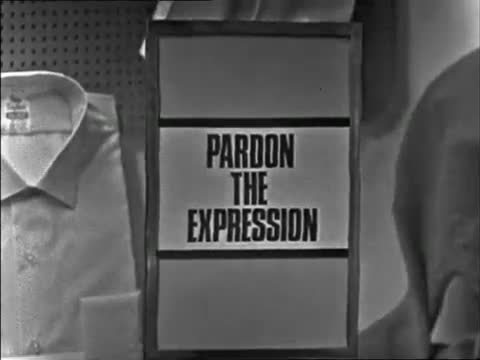
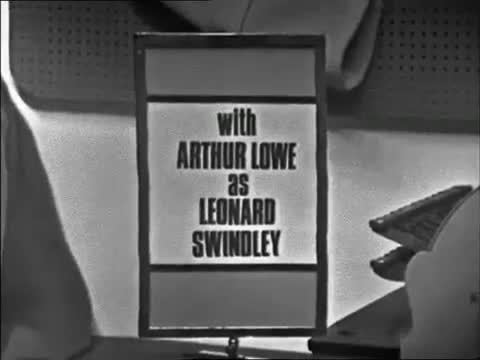



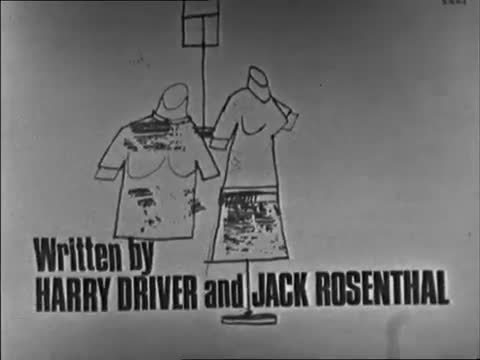


Pardon the Expression - ITV - June 2, 1965 - June 27, 1966
Sitcom (36 Episodes)
Running Time: 30 minutes
Stars:
Arthur Lowe as Leonard Swindley
Betty Driver as Mrs Edgeley
Joy Stewart as Miss Sinclair
Paul Dawkins as Ernest Parbold (series 1)
Barbara Young as Pam Plummer (series 1)
Holly Doone as Mavis Foster (series 1)
Robert Dorning as Wally Hunt (series 2)
Anthony Sharp as Brigadier Hawk (series 2)
John Le Mesurier as Sir Charles Dobson (series 2)
Julian Holloway as Norman Burton (series 2)
John Barron as Lord Penge (series 2)
1 note
·
View note
Text
Blueprint for Inspiration: Top 5 Influencers for Architecture Students to Follow
In the ever-evolving world of architecture, staying inspired and informed is crucial for those studying the craft. Architecture students, in particular, stand at the threshold of tradition and innovation, eager to leave their mark on the skyline of our future. In this digital age, one of the most accessible sources of inspiration and learning comes from following the influencers who shape contemporary architectural discourse. These thought leaders not only showcase the latest trends and technologies but also provide insights into the creative process, sustainability practices, and the social responsibilities of modern architecture. Here are the top five influencers that every architecture student should follow to fuel their creative journey.
1. Bjarke Ingels: Pioneering Sustainable Innovation
Bjarke Ingels, the founder of BIG (Bjarke Ingels Group), is renowned for his innovative approach to sustainable architecture and design that's both aesthetically pleasing and functionally smart. Ingels' projects, ranging from residential buildings to large urban spaces, are celebrated for their creativity and their focus on social and environmental sustainability. Following Bjarke Ingels offers students a window into the process of integrating green technologies and innovative materials in modern architecture, making sustainability not just an option but a desirable standard.
2. Zaha Hadid Architects: Legacy of Innovation
The late Zaha Hadid left behind a legacy that continues to inspire through the ongoing work of her firm, Zaha Hadid Architects. Known for her revolutionary designs and fluid forms that push the boundaries of architecture, Hadid's firm continues to be at the forefront of technological and material innovation. For architecture students, following Zaha Hadid Architects is a masterclass in how daring designs can become reality, showcasing projects that blend art, architecture, and engineering in unprecedented ways.
3. Norman Foster: Blending High Tech and Culture
Sir Norman Foster, the mind behind Foster + Partners, has significantly influenced contemporary architecture with his high-tech designs that blend cultural sensitivity with sustainability. Foster's work, which includes iconic structures like The Gherkin in London and the Apple Campus in California, exemplifies how technology can be harnessed to create buildings that are not only functional but also symbols of cultural identity. Students can learn from Foster the importance of integrating technology with an understanding of the cultural and social context of architecture.
4. Alejandro Aravena: Socially Responsible Architecture
Alejandro Aravena, a Chilean architect known for his focus on socially responsible architecture, offers a different but equally important perspective. His work, particularly with the “half a good house” concept, demonstrates how architecture can address social and housing challenges by engaging communities in the design process. Following Alejandro Aravena can inspire students to think about architecture beyond aesthetics and functionality, considering its impact on social equity and community empowerment.
5. Jeanne Gang: Advocating for Community and Ecology
Jeanne Gang, the founder of Studio Gang, is recognized for her research-based approach to design that emphasizes relationships between individuals, communities, and environments. Her projects often explore the potential of architecture to foster community engagement and ecological sustainability. Gang’s work, such as the Aqua Tower in Chicago, challenges students to consider how buildings can contribute to the fabric of communities and the health of the planet.
Following for Growth and Inspiration
In addition to showcasing groundbreaking projects, these influencers often share their thoughts on the future of architecture, their design process, and the challenges they face, providing a holistic view of what it means to be an architect today. Following these influencers can help architecture students:
Stay Updated: Keeping abreast of the latest trends, technologies, and materials in the field.
Learn from Masters: Understanding the thought processes and philosophies that guide the work of leading architects.
Inspire Creativity: Seeing innovative designs and approaches to problem-solving can spark new ideas and creative solutions.
Think Globally: Appreciating how architecture interacts with various cultural, social, and environmental contexts around the world.
Network and Engage: Engaging with the broader architecture community, providing opportunities for networking, collaboration, and discussion.
Building Your Path
For architecture students, following these influencers is more than just a source of inspiration; it's a window into the future of architecture. It offers lessons in creativity, sustainability, and the social role of the architect in the 21st century. As students embark on their architectural journeys, these influencers can serve as beacons, guiding them through the challenges and opportunities of modern design. By observing, learning, and occasionally questioning the work of these masters, students can forge their paths in the architectural landscape, armed with the knowledge and inspiration to innovate and impact the world around them.
1 note
·
View note
Text
Breaking Through Boundaries: Exploring the World of Biggest Glass Structures
Toughened Glass, a material known for its transparency and versatility, has undergone a remarkable transformation in recent years. As architects and engineers push the boundaries of design and technology, we find ourselves surrounded by awe-inspiring glass structures that defy conventional norms. In this blog post, we'll delve into the world of the biggest glass structures, exploring their architectural significance, engineering marvels, and the impact they have on our modern urban landscape.

The Shard, London:Our journey begins in London, where "The Shard" stands tall and proud as one of the most iconic glass structures in the world. Soaring to a height of 310 meters, this crystalline marvel is a testament to modern architecture. Its glass façade not only offers panoramic views of the city but also reflects the ever-evolving skyline of London.
The Louvre Pyramid, Paris:Moving from London to Paris, we encounter the breathtaking Louvre Pyramid. Designed by the renowned architect I. M. Pei, this glass pyramid serves as the main entrance to the Louvre Museum. Despite its controversial debut in the 1980s, the pyramid has become an integral part of the museum's identity, blending tradition with innovation.
China's Glass Bridges:China, known for its ambitious engineering projects, boasts some of the world's largest and most spectacular glass bridges. These dizzying structures, suspended high above scenic landscapes, provide visitors with a unique and exhilarating experience. From the Zhangjiajie Glass Bridge to the Grand Canyon Glass Skywalk, these bridges redefine our relationship with both height and transparency.
Apple Park's Glass Ring, Cupertino:In the heart of Silicon Valley, Apple Park's "Spaceship" campus stands as a modern architectural wonder. The colossal glass ring, designed by Sir Norman Foster, creates a seamless blend of nature and technology. The extensive use of curved glass panels not only maximizes natural light but also promotes a sense of openness and collaboration among employees.
Crystal Houses, Amsterdam:Venturing into Amsterdam, we encounter the innovative Crystal Houses. This retail space, designed by MVRDV, challenges traditional brick-and-mortar norms by using a transparent glass brick façade. The result is a visually stunning and unconventional display of goods that blurs the lines between art and commerce.
Conclusion:
The evolution of glass in architecture has given rise to some of the most spectacular and daring structures in the world. From towering skyscrapers to transparent bridges, these feats of design and engineering redefine our urban landscapes and challenge our perceptions of space. As architects continue to push the boundaries of what is possible, we can only imagine what the future holds for the world of giant glass structures. In this blog, we've only scratched the surface of this fascinating architectural realm, inviting readers to explore, appreciate, and perhaps even be inspired to see the world through a different lens.
0 notes
